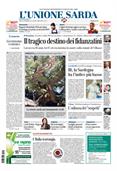Unfortunately, propio, and other horrors: the top 10 grammatical blunders of Italians.
Nearly 7 out of 10 people make "disturbing" errors in writing, but also in speaking: Libreriamo's researchPer restare aggiornato entra nel nostro canale Whatsapp
Oscar-worthy blunders, embarrassing assumptions, and unfounded beliefs: today, nearly 7 out of 10 Italians (68%) struggle with grammar and make disturbing errors in writing, but also in speaking.
A problem that experts say is also the result of overuse of the internet and the use of neologisms and Anglicisms, which have rendered Italians incapable of writing and sometimes formulating sensible arguments in their own language.
“Qual'è”, “pultroppo”, “propio”, “avvolte”, “al linguine” without forgetting the unmissable “c'è ne” and “c'è né”: these are the findings of a survey conducted by Libreriamo, the digital media dedicated to culture consumers, on approximately 1600 Italians between the ages of 18 and 65. The survey used the SWOA (Web Opinion Analysis) methodology through online monitoring of blogs, forums and the main social networks – Facebook, Instagram, X, YouTube – and involving a panel of 20 experts including sociologists and literary figures. The study aimed to understand the main grammatical errors that Italians make today, the causes of such blunders and to understand what is recommended to restore the rightful dignity of our beloved Italian language.
"Italian, understood as a language, is a symbolic place that welcomes us beyond geographical, social, and generational differences," says Saro Trovato, sociologist and founder of Libreriamo . "Language represents a value to be safeguarded, one of our country's greatest assets to be protected and enhanced: to do so, we must first understand it. To contribute to this process of enhancement, at Libreriamo, we have decided to help rediscover the Italian language through games and mental exercises. So we created a book, "501 Quizzes on the Italian Language," which allows you to test your knowledge of our beloved Italian, alone or with friends, while simultaneously training your mind and memory. Because the Italian language must be understood and protected, as it can foster a sense of community, belonging, and identity."
But what are the most common grammatical errors made by Italians? Here are the top 10:
1) The apostrophe (62%) – The apostrophe is one of the most unpleasant friends in the Italian language. When do you use it? Simple, with all feminine words, so: un'amica sì, un amico no. And so, apostrofo? It's an elision: you can't say the apostrophe, so it becomes the apostrophe. Finally, there's also the truncation: un po requires an apostrophe, because it's a truncation of the word "poco."
2) Use of the subjunctive (56%) – The subjunctive is the true Achilles heel of many Italians. How many blunders do we hear every day, especially on television? "The important thing is that you passed the exam," although widely used, this is grammatically incorrect because in this case the subjunctive is used: "The important thing is that you passed the exam."
3) Pronouns (52%) – The correct use of pronouns is another big mistake Italians make. “I told him she was very beautiful.” In this case, when referring to a female, the pronoun “le” should be used: “Le ho detto che era molto bella.”
4) Correct verb declension (50%) - A very common error, both in speech and writing, concerns verb declension, especially regarding the use of verb tenses and the choice of auxiliary verbs. Confusing the use of the auxiliary verb essere (be) with avere (have) (for example, saying "ho vado" (I went) instead of "sono vado" (I went) is a common mistake, as are the declension of irregular verbs or the incorrect use of subjunctive forms.
5) Using a C or a Q (48%) – A classic mistake that the most absent-minded have been making since elementary school. While the error goes unnoticed in spoken language, it's in written language that it becomes apparent. Here's a list of words that are spelled with a C but are often confused and used with a Q: Evacuate and NOT evacuate; Profitable and NOT profitable; Shake and NOT shake; Collect and NOT collect; Promiscuous and NOT promisquo; Harmless and NOT harmless.
6) Ne or né? (44%) – Another one of those "red pen" mistakes. The accent on "né" is used when the word is intended as a negation. If there is no negation, ne should be used without the accent.
7) Punctuation (39%) – Don't deny it. Everyone has fallen into this trap at least once. Commas, semicolons, and colons should never be used haphazardly. Each punctuation mark has its own rules. The comma's main function is to provide a precise cadence to long, complex sentences. Colons, on the other hand, are used, for example, to introduce direct speech or to present an explanation or list.
8) Un po, un po', or un pò? (37%) – Although incorrect, the spelling "pò" with an accent is becoming increasingly common. A quick search online reveals that "un pò" isn't just found in chat rooms, blogs, and forums, but also in press releases and sometimes newspaper articles! The correct spelling is "un po'" with an apostrophe, because the form is the result of a truncation.
9) And or ed? A or ad? (35%) – Surely, at least once in your life, you've had the doubt of which conjunction to use in your message. It's simple: the addition of the euphonic 'd' should only be used if the following word begins with the same vowel as the preceding word. So: I'm going to Hamburg; He was happy and enthusiastic.
10) Mispronunciations – And then there are the words and phrases that are distorted by many and yet considered correct. Some examples: daccordo (instead of d'accordo), avvolte (instead of a volte), pultroppo (instead of gratuitamente), and propio (instead of proprio).
